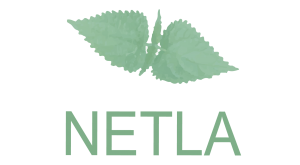Upgrading Iceland: Icelandic secondary school administrators’ views about Innovation and Entrepreneurial Education (IEE) within the context of curriculum studies
Keywords:
nýsköpunar- og frumkvöðlamennt, sköpun, frumkvæði, námskrárfræði, námskrárhugmyndastefnaAbstract
Innovation and entrepreneurial education (IEE) has been introduced as an educational endeavour that serves the economic progress of modern societies. But in recent years it has also been regarded as an area of learning that promotes individual learners to become creative, active and critical citizens. Thus IEE can be seen as a premise for personal and cultural growth, economical and technological development and scientific discovery. IEE has become a curricular area focusing on creativity and knowledge to solve problems that learners themselves identify and analyse, at the same time enhancing their initiative. It aims at developing critical and creative thinking in design, science, technology, marketing and enterprise. The pedagogy of IEE has been analysed as emancipatory pedagogy, where the learner has ample agency and the teacher gradually and systematically gives control to students in their projects (Svanborg R. Jónsdóttir, 2011). IEE has developed in Iceland as a concept where innovation is more commonly taught at the compulsory level and entrepreneur-ship more often at the uppersecondary level. In other countries, the terms entrepreneurship education, entrepreneurial education or enterprise education are more commonly used for this kind of education (Svanborg R. Jónsdóttir, Meyvant Þórólfsson, Gunnar E. Finnbogason & Jóhanna Karlsdóttir, 2013). The findings of this research imply that different implementations of IEE can be found in upper secondary schools in Iceland, despite that the National Icelandic Curriculum for Upper Secondary Schools (Mennta- og menningarmálaráðuneytið, 2011) has not presented IEE as a specific discipline or area in secondary education. In 2012 The Innovation Center Iceland (i. Nýsköpunarmiðstöð Íslands), The Ministry of Education, Science and Culture, The Ministry of Industries and Innovation, The School of Education of The University of Iceland, The Union of Teachers in IEE (i. Félag kennara í nýsköpunar- og frumkvöðlamennt), and The Icelandic Secondary Schools Association (i. Félag íslenskra framhaldsskóla), signed an agreement on enhancing IEE education in secondary schools. The first undertaking was to explore the present situation of IEE education in secondary schools. An Internet survey was submitted to administrators in all Icelandic upper secondary schools with questions about the present status of IEE, the administrators’ views on IEE, how they defined it, and their ideas about its role in teacher education. The survey contained two open questions where the administrators could analyse and explain their views on IEE and the opportunities they saw in this curriculum area. The answer rate was 97% for the questionnaire and 90% for the open questions. The authors of this article and The Research Unit on Curriculum and Assessment (i. NNN Rannsóknastofa) had permission to use and analyse the answers to open questions enclosed in the questionnaire. The questions were analysed with respect to a predefined curriculum ideology framework, based on Michael Schiro’s (2008) classification of curricula into four curriculum ideologies, learner-centred, scholar academic, social efficiency, and social reconstructionist. The results indicate that administrators of secondary schools see various interesting opportunities in IEE. Most of them explain the opportunities IEE offers in the spirit of a learner-centred curriculum on the one hand and a social efficiency curriculum on the other. Indicators of social reconstruction and academic scholar ideologies were less apparent. Thus ideas about student autonomy, creativity and critical thinking appear to mix with ideas about training pupils and providing them with knowledge and skills that they need to function within their culture according to given standards presented by the authorities of their society.Downloads
Download data is not yet available.

